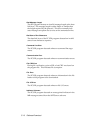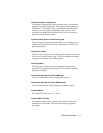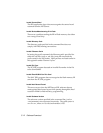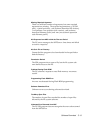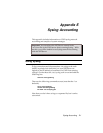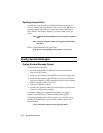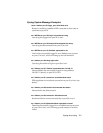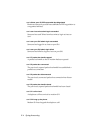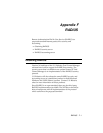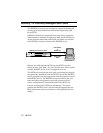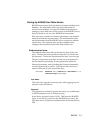
E-2 Syslog Accounting
Spotting Unused Ports
A quick way to spot serial ports that should be active, but are
not, is to issue a grep command for the name of your NETServer
(in this example, usrobotics) or for the keywords “NETServer:”
and “dialnet” and make a frequency count of which ports get
used.
May 4 20:52:20 usrobotics NETServer: port S5 Login succeeded for
Usun
May 5 04:05:10 usrobotics dialnet: port S5 Pgpu succeeded dest
149.198.6.1
Here’s a command that will do just that:
grep “port S” /var/log/authlog | awk ‘{print $7}’ | sort | uniq -c
Syslog System Messages
Syslog System Message Format
In the following examples:
• usr1 is the hostname of a NETServer, router1 is the host
name of an IPX router
• doug is a user name on the NETServer set up as a login user
• brian is a user name on the NETServer set up as a dialback
login user, Pbeach is a PPP netuser account for a host named
beach, using IP address 149.198.7.1
• Dsand is a dialback netuser
• Lsand is the Location Table entry referenced by Dsand, mint
and cane are the names of hosts
Anywhere a host name appears an IP address can appear
instead, if the NETServer’s inverse address lookup fails.
All syslog messages start with the month, day and time stamp
as follows; this has been omitted in the examples below, but
looks like this:
Jul 24 14:54:56 usr1 dialnet: port S5 doug login failed



